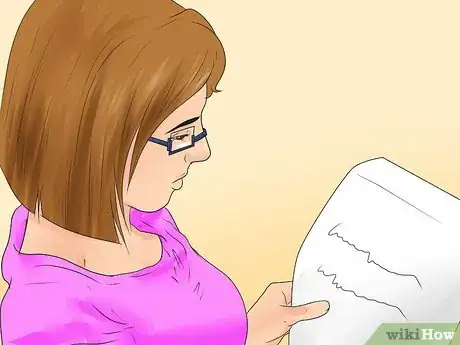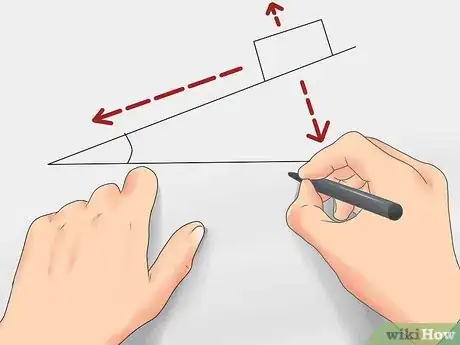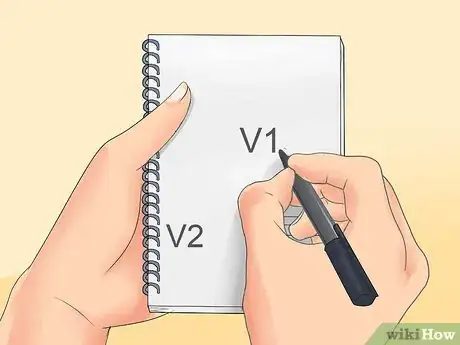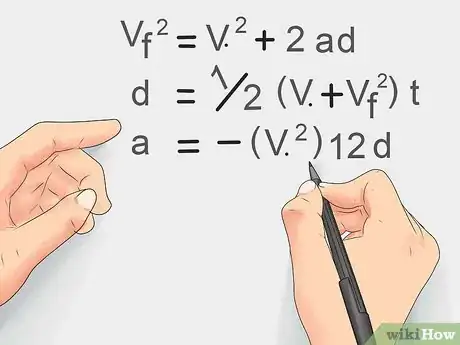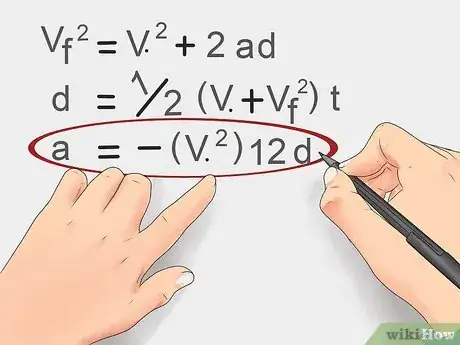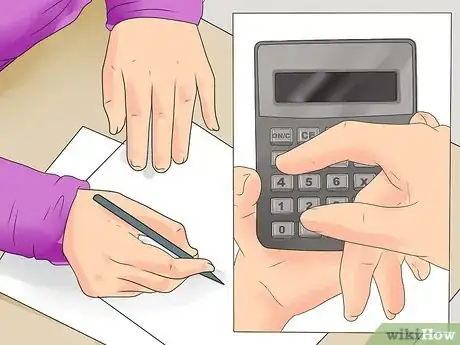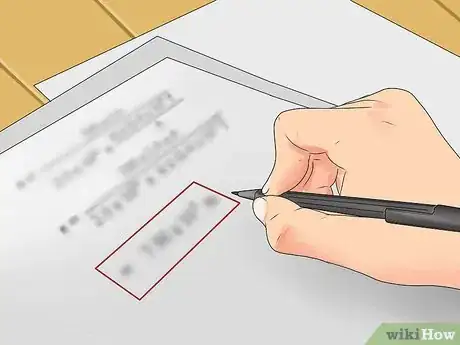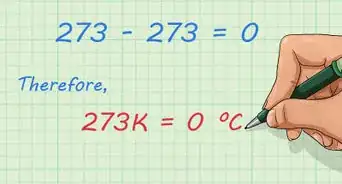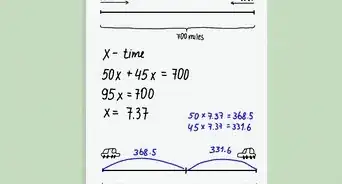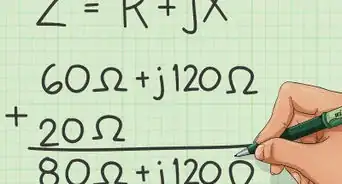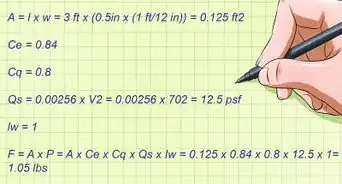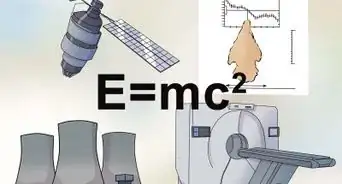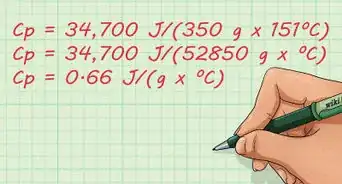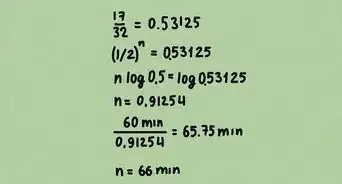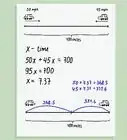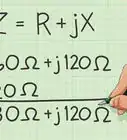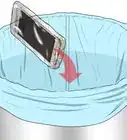X
wikiHow is a “wiki,” similar to Wikipedia, which means that many of our articles are co-written by multiple authors. To create this article, 23 people, some anonymous, worked to edit and improve it over time.
This article has been viewed 301,766 times.
Learn more...
Baffled as to where to begin with a physics problem? There is a very simply and logical flow process to solving any physics problem.
Steps
-
1Calm down. It is just a problem, not the end of the world!
-
2Read through the problem once. If it is a long problem, read and understand it in parts till you get even a slight understanding of what is going on.Advertisement
-
3Draw a diagram. It cannot be emphasized enough how much easier a problem will be once it is drawn out. Ideally, a free body diagram is what you will draw, but even drawing how you imagine the wording of the problem inside your head (like a chart maybe) will make solving this problem easier. There are often marks awarded for drawing a correct diagram. Once you are done with this, try to bring this drawing into motion like a movie if you can. This is not really necessary but will give you a clear understanding of what is happening in the problem.[1]
-
4List down anything that is given to you to the side under a category labeled "known". e.g. you are given two velocities. Label the first V1 and set it equal to the value given. Label the other value V2 and set it equal to the value provided for it.[2]
-
5Look for the unknown variables. Ask yourself, 'What am I solving for?' and 'What are the unknown variables in this problem?' List these to the side as well under a category labeled "unknown".[3]
-
6List formula that you think might be applicable to this problem. If you are able to look up equations you do not remember exactly and think might be applicable to the problem, do so and write them down.[4]
-
7Pick the right formula. At times there may be different formulas for the same set of variables and you may be confused as to which one to use. Hence when you memorize the formula, also remember the conditions in which they hold good ( conditions under which that formula can be applied). for example: - v = u + at can be applied only when the acceleration is constant. So in a question if the acceleration is not constant, you will know you are not supposed to use this equation here. This may also help to increase the subject understanding in general.[5]
-
8Solve the equations. Take your formula and try to solve for one variable at a time. Solve for each variable that is listed under the "unknown" category. Try to solve for variables that you can determine easily first.[6]
-
9Keep repeating the last step for each unknown quantity in turn. If you can't do one, try others first as you may be able to work it out when you have information from other answers.
-
10Put a box, circle, or underline your answer to make your work neat.
Advertisement
Community Q&A
-
QuestionHow can I pass physics in grade 10?
 Community AnswerKeep trying and be thorough in learning the theories. Don't hesitate to ask any questions of your teacher if you don't understand something. Write notes and list down the formulas and stick them on your wall. Keep reviewing and things will fall into place easily.
Community AnswerKeep trying and be thorough in learning the theories. Don't hesitate to ask any questions of your teacher if you don't understand something. Write notes and list down the formulas and stick them on your wall. Keep reviewing and things will fall into place easily. -
QuestionI struggle to remember physics formulas. Any tips?
 Community AnswerWrite the formulas down over and over again while standing up. Studies show that doing so can improve your recall. Also, you could record yourself reading the formulas and play them on a loop while you sleep.
Community AnswerWrite the formulas down over and over again while standing up. Studies show that doing so can improve your recall. Also, you could record yourself reading the formulas and play them on a loop while you sleep. -
QuestionWhat is the relationship between Kelvin and Celsius?
 Community Answer0 degree Celsius = 273 Kelvin. Therefore, 25 degree Celsius (25 + 273) = 298 Kelvin.
Community Answer0 degree Celsius = 273 Kelvin. Therefore, 25 degree Celsius (25 + 273) = 298 Kelvin.
Advertisement
Warnings
- Physics is not easy to grasp for many people, so do not get bent out of shape over a problem.⧼thumbs_response⧽
- If an instructor tells you to draw a free body diagram, be sure that that is exactly what you draw.⧼thumbs_response⧽
Advertisement
Things You'll Need
- A Writing Utensil (preferably a pencil or erasable pen of sorts)
- Paper
- Calculator with all the functions you need for your exam
- An understanding of the equations needed to solve the problems. Or a list of them will suffice if you are just trying to get through the course alive.
References
- ↑ https://iopscience.iop.org/article/10.1088/1361-6404/aa9038
- ↑ https://physics.wvu.edu/files/d/ce78505d-1426-4d68-8bb2-128d8aac6b1b/expertapproachtosolvingphysicsproblems.pdf
- ↑ https://www2.southeastern.edu/Academics/Faculty/rallain/scaleup/problem_solving.html
- ↑ https://physics.wvu.edu/files/d/ce78505d-1426-4d68-8bb2-128d8aac6b1b/expertapproachtosolvingphysicsproblems.pdf
- ↑ https://www.brighthubeducation.com/science-homework-help/42596-tips-to-choosing-the-correct-physics-formula/
- ↑ https://www.brighthubeducation.com/science-homework-help/42596-tips-to-choosing-the-correct-physics-formula/
About This Article
Advertisement

